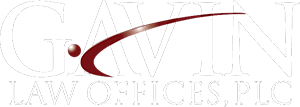Canadian Trademark Law Changes
On June 17, 2019, Canada will enact new regulations aimed to bring Canadian trademark law in line with other companies like the United States. Below are pertinent changes that will affect how you file and/or maintain your Canadian trademark registrations.
Nice Agreement and Filing Fees:
The Nice Classification, established by the Nice Agreement (1957), is an international classification of goods and services for identifying and registering trademarks. The Nice Classification system is updated every five years, and the latest version includes 45 classes, with classes 1-34 representing goods and classes 35-45 representing services. An applicant seeking to register a trademark can choose from these classes as appropriate for its goods/services. Since the system is recognized in numerous countries, this helps to streamline applying for trademarks internationally.
Under Canada’s previous trademark laws, goods and services descriptions did not require Nice Classifications — applicants needed only to pay a single $250 CAD fee and to describe their goods/services in “ordinary commercial terms.” One of the significant advantages of the previous Canadian regime was the ability to file with respect to an unlimited range of goods and services, and still only pay a single application fee. Under the new law, the initial application fee will be $330 CAD for one class and $100 for each additional class in which an applicant wishes to file.
Additionally, for existing Canadian registrations, after June 17, 2019, registrants will need to pay per class for renewed marks as well. The current renewal fee is $350 CAD, but will increase to $400 CAD, plus $125 for each additional class.
Overall, these changes will make filing for trademark protection in Canada more expensive moving forward. In order to avoid paying additional fees per class, you may choose to file any new marks and/or renew any existing marks now.
The above changes bring Canadian trademark law in line with many other jurisdictions, including the United States, where applicants are required to separate the descriptions of goods and services according to the Nice Classification system, and to pay a fee for each class claimed in connection with any particular mark.
Shorter Renewal Period:
Previously, registrants were required to renew trademark registrations every 15 years in Canada. The new revisions will reduce the renewal period to only 10 years. You may choose to renew your marks in Canada before June 17, 2019 for an additional 15 years of protection. If you renew a mark in Canada after June 17, 2019, your trademark will be valid for only 10 additional years, after which you must file an additional renewal (essentially losing 5 years of protection for the same cost).
Removal of “Use” as a Requirement for Registration:
Under prior Canadian law, no registration could be issued for a mark until the applicant officially declared use of the trademark in Canada. Applications based on use in Canada had to contain a date of first use, and applications based on proposed use could not proceed to registration until a Declaration of Use was provided. The new law removes the use requirement. After June 17, 2019, an applicant will be able to file and obtain a registration for a mark without ever having used the mark in Canada. This is similar to intent-to-use applications in the U.S. Under the new system, being the first to file an application will be extremely important, and you may wish to prioritize your Canadian applications in the future.
Madrid Protocol:
Canada’s new law adopts the Madrid Protocol which allows applicants to file an international application within a centrally-administered trademark system. The applicant may select the member states in which they wish to obtain national protection. These international applications must be based on a domestic registration or pending application for an identical trademark. After June 17, 2019, applicants may designate Canada in new International Applications, or as a Subsequent Designation in existing registrations. We recommend seeking legal counsel prior to filing under the Madrid Protocol, as there are additional considerations and requirements to be taken into account. Please contact our offices with any questions you may have regarding filing under the Madrid Protocol.
Distinctiveness:
The new Canadian law empowers Canadian trademark examiners to object to a trademark application on the basis that the applied-for mark is not distinctive. Previously, examiners’ review process was more limited. After June 17, 2019, new applications may be rejected if an examiner’s “preliminary view is that the trademark is not inherently distinctive,” which will likely lead to more substantive objections during the examination process than in the past.
You May Wish to Consider:
- Filing new applications, particularly Multi-Class Applications, before June 17, 2019
- Canada’s filing fee is $250 now, but will increase to $330 (plus $100 for each additional class) on June 17.
- Renewing Canadian registrations before June 17, 2019
- You may want to renew before June 17, 2019 regardless of when renewal is due to reduce costs — the current renewal fee is $350, but it will increase to $400 on or after June 17 (plus $125 for each additional class).
- Filing immediately to protect key brands in Canada. Trolls will be active and may try to acquire rights in your marks due to the lack of a use requirement in pending and new applications as of June 17, 2019.
- Employing watch services for key brands in Canada.
- Designating Canada in new Madrid Protocol international applications, or in existing registrations as a Subsequent Designation, starting June 17, 2019.
- The impact of the new law on any pending Canadian applications you may have.
Please feel free to contact us with any questions. – Rina Van Orden, Esq.





















